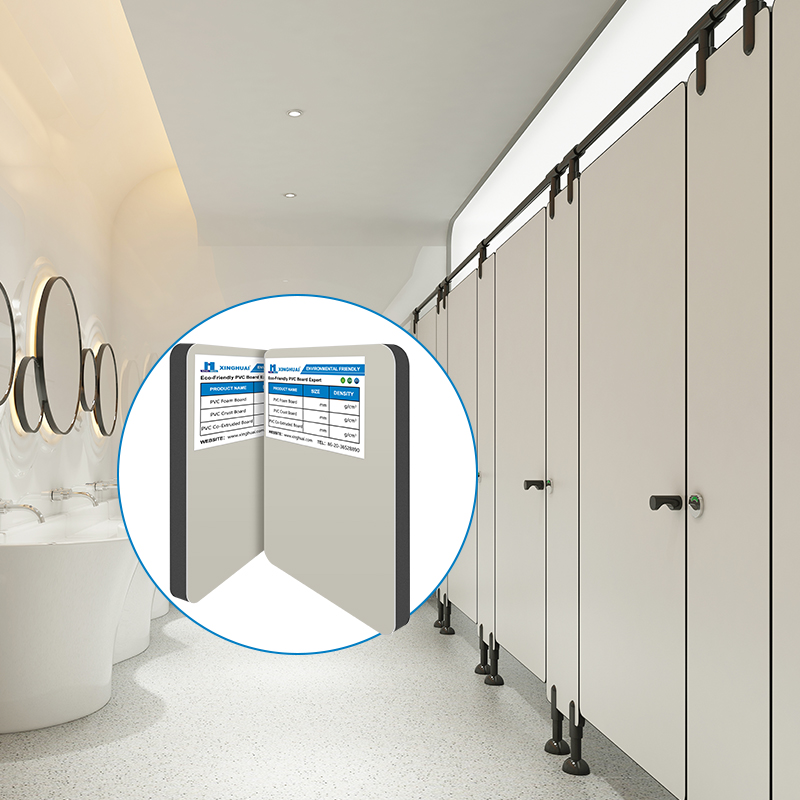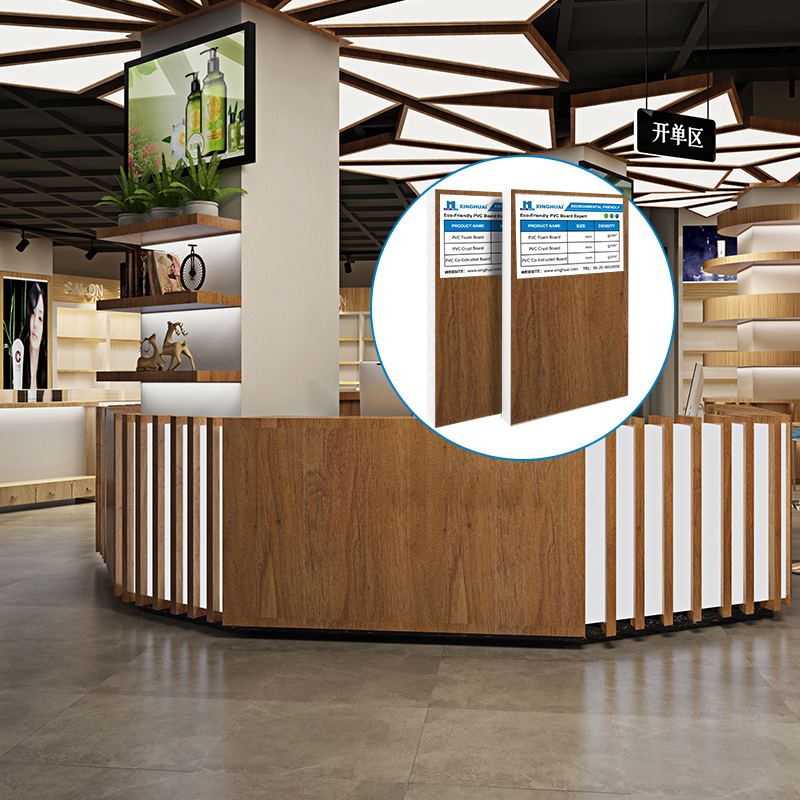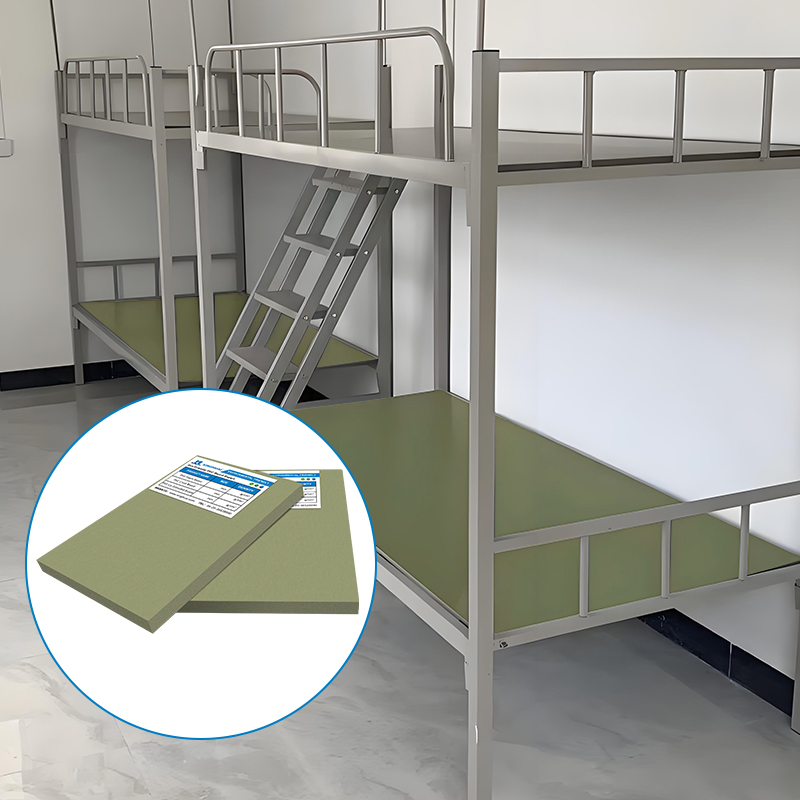How to Distinguish PVC Foam Board, Laminated Board, and Co-Extruded Board?
PVC (Polyvinyl Chloride) boards are widely used in construction, advertising, furniture, and interior design due to their versatility, durability, and cost-effectiveness. However, differentiating between pvc foam board, pvc laminated board, and pvc co extruded foam board can be confusing, as they often appear similar but have distinct manufacturing processes, structures, and properties. This article provides a detailed guide to distinguishing these three types of pvc board, focusing on their characteristics, production methods, and practical applications.
1. Understanding the Basics: What Are PVC Boards?
Pvc board is a broad term for rigid or semi-rigid sheets made from PVC resin. They vary in density, surface finish, and production techniques, resulting in different performance traits. The three main types discussed here are:
Pvc foam board: A lightweight, closed-cell foam PVC sheet.
Pvc laminated board: A PVC board with a decorative or protective laminate layer bonded to its surface.
Pvc co extruded foam board: A dual-layer PVC board with a foam core and a solid outer skin co-extruded together.
2. PVC Foam Board: Structure, Properties, and Identification
Pvc foam board is manufactured by introducing chemical blowing agents into PVC resin, creating a cellular structure during extrusion.
Key Characteristics:
Lightweight and Rigid: Due to its foamed core, pvc foam board is significantly lighter than solid pvc board but maintains rigidity.
Closed-Cell Structure: The foam cells are sealed, preventing water absorption and enhancing dimensional stability.
Uniform Surface: Typically has a smooth or lightly textured finish, depending on the die design.
Standard Sizes: Often available in 4x8 feet (1220x2440mm) sheets with thicknesses ranging from 1mm to 30mm.
Color Options: Usually white, black, or gray, but can be colored with pigments.
How to Identify:
Cut a Sample: Pvc foam board will reveal a consistent foam structure when cut, with tiny, evenly distributed cells.
Weigh It: Compare its weight to solid pvc board; pvc foam board is much lighter.
Check Flexibility: While rigid, pvc foam board may bend slightly under pressure without cracking, unlike solid pvc board.
Water Test: Drop water on the surface; pvc foam board (with a closed-cell structure) will not absorb it.
Common Uses:
Signage, displays, exhibition stands, and DIY projects.
Wall cladding, ceiling tiles, and furniture components.
Pvc hard foam board (a denser variant of pvc foam board) is used for applications requiring higher strength, such as outdoor furniture or structural supports.
3. PVC Laminated Board: Structure, Properties, and Identification
Pvc laminated board consists of a base pvc board (often pvc foam board or pvc hard foam board) bonded with a decorative or protective laminate layer.
Key Characteristics:
Dual-Layer Construction: A core pvc board is covered with a laminate (e.g., vinyl, PET, or acrylic).
Aesthetic Variety: The laminate can mimic wood, stone, metallic, or custom patterns.
Enhanced Durability: The laminate protects against scratches, UV rays, and moisture, extending the board’s lifespan.
Thickness: Typically 3mm to 20mm, depending on the core and laminate thickness.
Surface Finish: Can be glossy, matte, textured, or embossed.
How to Identify:
Inspect the Surface: Pvc laminated board has a distinct, non-PVC finish (e.g., glossy, matte, or textured).
Peel Test (Gently): Attempting to peel the laminate may reveal adhesion lines (though this is not recommended for undamaged boards).
Compare to Unlaminated PVC: The laminated version will have a more polished or patterned appearance than plain pvc board.
Edge Inspection: The laminate may not fully cover the edges, revealing the core pvc board underneath.
Common Uses:
Laminated pvc board for furniture, cabinetry, and interior wall panels.
Laminated pvc ceiling tiles for decorative and moisture-resistant ceilings.
Retail displays and point-of-sale signage.
4. PVC Co-Extruded Foam Board: Structure, Properties, and Identification
Pvc co extruded foam board is produced using a co-extrusion process, where a foam core is simultaneously extruded with a solid outer skin.
Key Characteristics:
Dual-Density Structure: A soft foam core is encased in a harder, denser outer layer, combining lightweight properties with durability.
Scratch and Impact Resistance: The solid skin protects the foam core from damage, making it more resistant to scratches and dents than pvc foam board.
Smooth, Glossy Finish: The outer layer provides a polished appearance without additional lamination.
Uniform Thickness: Typically 3mm to 30mm, with precise dimensional control.
Weather Resistance: The solid skin enhances UV and moisture resistance, making it suitable for outdoor use.
How to Identify:
Cut a Cross-Section: Pvc co extruded foam board will show a distinct foam core and solid skin, unlike pvc foam board, which has a uniform structure.
Test Hardness: The outer layer is harder than the core, unlike pvc foam board, which has uniform hardness throughout.
Check for Laminate: Unlike pvc laminated board, pvc co extruded foam board does not have an added film; the skin is co-extruded as part of the board.
Surface Texture: The outer skin is smooth and glossy, with no visible laminate edges.
Common Uses:
Outdoor signage, advertising displays, and high-traffic area applications.
Furniture components requiring durability, such as tabletops, shelves, or countertops.
Pvc hard foam board variants are used for structural applications where strength and lightness are critical.
5. Practical Tips for Distinguishing PVC Boards
Visual Inspection:
Pvc foam board has a uniform, matte PVC surface with no added layers.
Pvc laminated board has a decorative or glossy finish, often with visible patterns or textures.
Pvc co extruded foam board has a smooth, glossy outer layer without added film or patterns.
Tactile Test:
Pvc foam board feels slightly spongy when pressed, especially near the edges.
Pvc laminated board has a hard, uniform surface (if the laminate is thick), but the edges may feel softer if the core is exposed.
Pvc co extruded foam board has a harder outer layer than the core, with a distinct difference in feel when pressed.
Cutting or Sanding Test:
Pvc foam board will reveal a consistent foam structure when cut or sanded.
Pvc laminated board may show the laminate peeling or separating if cut aggressively.
Pvc co extruded foam board will show a clear distinction between the foam core and solid skin when cut.
Water and Scratch Tests:
Pvc foam board (closed-cell) will not absorb water but may scratch easily.
Pvc laminated board resists water but may scratch if the laminate is damaged.
Pvc co extruded foam board resists both water and scratches due to its solid outer skin.
6. Keyword Count Summary
Pvc foam board: 25 times
Pvc laminated board: 20 times
Pvc co extruded foam board: 20 times
Pvc board: 20 times
Pvc hard foam board: 15 times
Conclusion
Distinguishing between pvc foam board, pvc laminated board, and pvc co extruded foam board requires understanding their manufacturing processes, structural differences, and performance traits. Pvc foam board is lightweight and uniform, pvc laminated board has an added decorative layer, and pvc co extruded foam board combines a foam core with a solid outer skin for enhanced durability. By using visual, tactile, and cutting tests, users can accurately identify the type of pvc board and select the right one for their applications.




